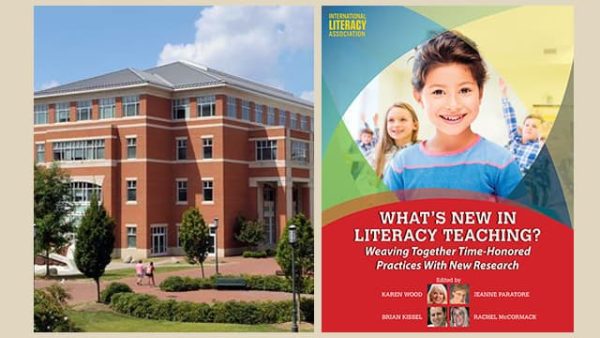College of Education publication reveals what’s new in literacy instruction

A new book edited and co-authored by College of Education faculty dives into the current state of literacy instruction and looks to the future of reading and writing in the classroom.
In “What’s New in Literacy Teaching?” Department of Reading and Elementary Education professors Karen Wood and Brian Kissel assemble a group of leading literacy scholars to cover a wide range of instructional issues.
The publication is composed of three parts: “Text, Talk and Tasks”; “Collaboration and Communications”; and “Literacy Learning With and Through Technology.”
Technology’s role as an established and growing classroom tool is a theme that runs throughout the work. Co-author Wood noted that teachers and students are more tech savvy than ever before, and that it is becoming a “necessity” of the modern classroom. Yet “there is no reason why these changes have to compromise the reading and writing abilities of the new generation,” she said, “On the contrary, they can be integrated into classroom instruction as a means of deepening and broadening understanding, content and strategy knowledge.”
As much as it looks forward, “What’s New in Literacy Teaching?” also looks to the past. The researchers dedicate several chapters to considering or reimagining the role of time-tested instructional techniques in today’s classrooms. Kissel co-wrote a chapter on the writer’s workshop that explains how this “retro” idea can help students take ownership of their development.
“When writers write, they continuously self-question because writing texts requires them to consider the audience,” he said. “When young children have access to mentor authors, including their peers, they begin to see possibilities for their own writing. And when given time and space to write in school, children develop routines that help them compose texts that grow in sophistication as children grow in other areas of cognitive development.”
To facilitate this process, the authors advise teachers to create classroom conditions where writing can flourish. Suggestions include to make sure there is time to write every day, provide a physical space that’s comfortable for writers, allow children choice in what they write so they stay engaged, create an instructional structure in which writing becomes a routine for writers, bring forward models and mentors for young writers so they see possibilities in their own writing and confer with writers by posing questions.
Real-world case studies are interspersed throughout the text, an effort to ease the transition from theory to practice. UNC Charlotte reading education master’s students interviewed the teachers for the studies, which Wood said are an important aspect of book.
“These are real teachers talking. They know what works and how to use these ideas in the classroom and teachers listen to them. Teachers in the field have neither the time nor the inclination to read research journals, but they do want to learn how to translate research and theory into classroom practice and that is the message of this book and these vignettes, in particular.”
The idea of bringing new knowledge to teachers in accessible ways is integral to the book, Wood said. “We believe educational change happens at the classroom level. Teachers matter. We write for teachers because, as professors, we believe teachers are our most important audience.”